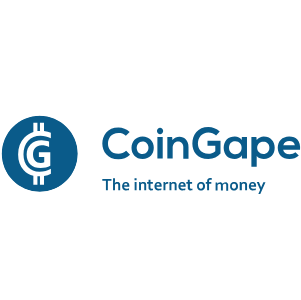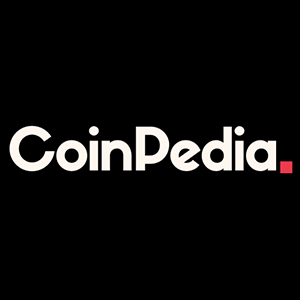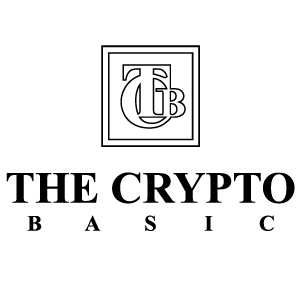2024-05-16 11:54:18
BITO And BITI: A Long/Short Bitcoin Strategy Plus Income
Summary ProShares launched several bitcoin-related ETFs, including the ProShares Bitcoin Strategy ETF and the ProShares Short Bitcoin Strategy ETF. BITO invests in bitcoin futures and has seen exceptional performance, slightly underperforming its benchmark index. Both BITO and BITI offer monthly dividends and can be used in a long/short strategy to hedge against bitcoin price volatility. Whatever you believe about Bitcoin ( BTC-USD ), it is an investment that is here to stay. The hysteria over the approval of a spot Bitcoin ETF earlier this year led to a spate of Bitcoin ETF IPOs. As many as 11 new Bitcoin ETFs were introduced in January 2024 and a total of at least 35 new ETFs were launched in the first 2 weeks of January, according to Reuters. Several of those bitcoin-related ETFs were launched by ProShares, known for having one of the largest assortments of ETFs on the market. ProShares has been at the forefront of the ETF revolution since 2006, according to their website: ProShares now offers one of the largest lineups of ETFs, with over $65 billion in assets. The company is a leader in strategies such as crypto-linked, dividend growth, interest rate hedged bond and geared (leveraged and inverse) ETF investing. ProShares continues to innovate with products that provide strategic and tactical opportunities for investors to manage risk and enhance returns. ProShares currently offers 46 ETFs in various categories, four of which are "Crypto-linked". ProShares There are also four more that are Crypto-linked, but that are short (or ultrashort) the currency. ProShares BITO: Long Bitcoin The ProShares Bitcoin Strategy ETF ( BITO ) was one of the first ETFs available in brokerage accounts that seeks to correspond to the performance of Bitcoin. BITO does that by investing in bitcoin futures, rather than investing directly in bitcoin. If you are interested in taking advantage of the upside of expected Bitcoin performance without having to invest directly in the cryptocurrency, BITO is one option to consider. Furthermore, for income investors such as myself, BITO throws off some generous income in the form of monthly dividends (more on that later). According to the BITO fact sheet , the fund's inception date was 10/18/21 and as of 3/31/24 it held about $3 billion in net assets. Those assets are shown on the fund fact sheet and as of that date included the following: ProShares The performance of BITO over the last year has been exceptional, with a total return at NAV of more than 128%, largely due to the substantial outperformance in the first quarter of 2024. ProShares BITO has slightly underperformed the index that it tracks as a benchmark, the Bloomberg Galaxy Bitcoin Index. Comparing total returns for BITO against BTC using the charting tool in SA, one can see how BITO tracks the index but has slightly underperformed it over the past year. Still, if you would like to hold some bitcoin in an easily traded ETF vehicle and wish to collect some income in addition to the capital gains from the rising price of BTC, consider BITO for a long-term "hodl". Seeking Alpha BITO Distributions While BITO attempts to capture some upside from the price movement of bitcoin futures, it also generates a high yield income stream based on monthly dividends that are distributed to shareholders based on gains from futures contracts or swap agreements. The dividends are classified as ordinary dividends for tax purposes, as explained in the fund's FAQ : Each of the Funds gets exposure to oil, bitcoin and/or ether futures contracts or swap on an index of futures contracts, as applicable, by investing in a wholly owned subsidiary which, in turn, invests in such futures contracts or swap agreements. For tax purposes, each Fund recognizes any net income of its subsidiary, including gains on such futures contracts or swap agreements in which its subsidiary invests, as an ordinary dividend on the final day of the subsidiary's tax year. When paid to Fund shareholders, these amounts are characterized for tax purposes as dividend distributions and are not eligible for capital gains treatment. Other securities held by the Funds, such as U.S. Treasury securities, may generate interest and capital gains (or losses), which may also be distributed. For 2024 those monthly dividends paid out by BITO have been substantial as shown on the fund's website: ProShares Bitcoin Halvening Now that the bitcoin "halving" event has taken place, the price of BTC retreated from its most recent high of about $73,800 to around $66,000 where it trades today, May 15 after jumping 7% after the positive April CPI report . One reason why the price shot up so much higher in Q1 of this year was due to anticipation of the "halvening ". Roughly every four years, the total number of bitcoin that miners can potentially win is halved (miners also earn transaction fees when building bitcoin blocks). This is intentional. Satoshi Nakamoto , the creator of Bitcoin, programmed the halving into Bitcoin's core code with the intention of creating scarcity over time. The explanation for the rapid rise in price is due to the expectation that there will be less bitcoin to mine, so the price will rise as a result of reduced supply and higher demand. The higher demand is already evident based on the number of new bitcoin ETFs that started up this year, fueling demand from investors who were uninterested before those ETFs became available. Inflation Correlation to Bitcoin Bitcoin prices are also expected to stay depressed if inflation remains higher for longer. Earlier this week, the price of bitcoin drifted higher as traders await an update on inflation data with hopes that the Fed will ease. Even though some feel that bitcoin could be seen as a hedge against inflation, the reality is that the price of bitcoin has shown to be highly correlated to the broader stock market and not correlated with the price of gold (as some had expected). This insight from Fidelity further goes into the expectations for the price of bitcoin and other cryptocurrencies based on rising inflation. Bitcoin is the largest cryptocurrency by market cap and arguably the most well known. As inflation rises, the U.S. Federal Reserve (the Fed) and other major central banks may be inclined to continue to raise interest rates or tighten monetary policies to slow the price rises. As a result, many asset classes, including cryptocurrencies, may see their prices fall. In fact, the price of bitcoin dropped below $60k at the start of May due to increasing concerns about inflation staying elevated. Therefore, it is really anyone's guess at this point whether bitcoin will soon resume its rise in price or continue to decline as interest rates remain higher for longer. In early May, JPMorgan noted that retail investors were starting to retreat from crypto, with significant profit taking in April driving down the price. Over the past year, bitcoin hasn't really acted as an inflation hedge, according to a report by Bank of America. In recent months, bitcoin returns have become more correlated with those of broad stock market indexes. This means that when markets tumble, the price of bitcoin tends to fall too. For example, after the Fed indicated that it would raise interest rates in early May, bitcoin plummeted in value alongside stocks. Bitcoin has been compared to gold, which is generally seen as an inflation hedge. However, the correlation between bitcoin and gold has been close to zero since June, meaning bitcoin's price hasn't moved together with the gold price. Short Bitcoin Strategy ETF ( BITI ) If you believe that bitcoin prices are likely to continue to decline and wish to hedge your portfolio with an ETF that offers a short trade option, you may want to consider a small position in BITI. In addition, BITI also pays a monthly dividend, although much smaller than the one paid by BITO. The BITI investment objective according to ProShares includes the following. ProShares Short Bitcoin Strategy ETF seeks daily investment results, before fees and expenses, that correspond to the inverse (-1x) of the daily performance of the Bloomberg Galaxy Bitcoin Index. Like BITO, BITI invests in bitcoin futures and not directly in bitcoin. If you do decide to purchase shares of BITI, there are some important considerations to take into account as explained on the website: This ProShares ETF seeks daily investment results that correspond, before fees and expenses, to -1x the daily performance of its underlying benchmark (the "Daily Target"). While the Fund has a daily investment objective, you may hold Fund shares for longer than one day if you believe it is consistent with your goals and risk tolerance. For any holding period other than a day, your return may be higher or lower than the Daily Target. These differences may be significant. Smaller index gains/losses and higher index volatility contribute to returns worse than the Daily Target. Larger index gains/losses and lower index volatility contribute to returns better than the Daily Target. The more extreme these factors are, the more they occur together, and the longer your holding period while these factors apply, the more your return will tend to deviate. Investors should consider periodically monitoring their geared fund investments in light of their goals and risk tolerance. Essentially, this means that BITI is not a "buy and hold" investment. It must be monitored frequently because the price can drop quickly depending on the price action of bitcoin. The BITI fact sheet includes additional information about the ETF. ProShares The performance of BITI has been unremarkable since inception, however, the month of April was favorable for total return performance as shown in this snippet from the website showing total return for the 1-month, 3-month, 6-month and 1-year periods ending 4/30/24. ProShares The April outperformance is not surprising given the downward trend of bitcoin prices since the start of April. This outperformance over the past month can be seen graphically using the charting tool on SA, although it changed again on May 15 as the price of bitcoin reversed and shot up 7.5% after a positive CPI report. Seeking Alpha Did I mention that BITI also pays monthly dividends? So, in addition to capturing some capital gains from the falling price of bitcoin, the monthly dividends offer an additional source of income for shareholders. BITI Dividend History This snippet from the fund website shows the dividends paid out so far in 2024, smaller than the monthly dividends paid in 2023, but still offer about 3% in annual forward yield based on current prices. ProShares While the price of bitcoin is volatile and difficult to predict, the opportunity to hedge against losses in BITO by holding shares of BITI offers one strategy to benefit from the price volatility and collect some income along the way, regardless of whether bitcoin prices rise or fall. That price volatility was evident today when the price of bitcoin shot up over 7% to $66,000 after dropping to below $60k in early May. The price of BITI fell about -7.5% due to its inverse tracking of the BTC index. On a YTD basis, the price of BITI has dropped more than -40% after today's -7.5% decline. Seeking Alpha Risk Tolerant Investors May Benefit from a Long/Short Bitcoin Strategy If you are interested in taking advantage of the potential rising price of bitcoin while hedging against the potential losses from a sudden drop in price, you may want to consider a long/short strategy that uses BITO to take advantage of the long position (upward price movement) with a smaller position in BITI to capture gains from a sudden short position (downward price action). Both funds pay a monthly dividend that yields some additional income to supplement any capital gains captured by price movements in either direction. I would recommend a very small position of less than 5% of your total portfolio value due to the speculative nature of investing in bitcoin.
Share at:











